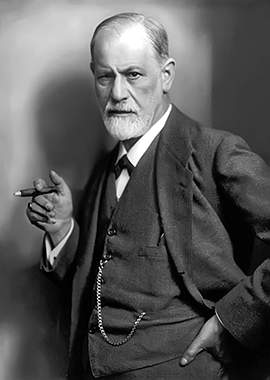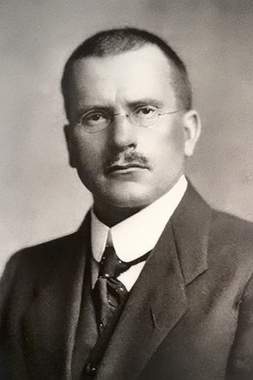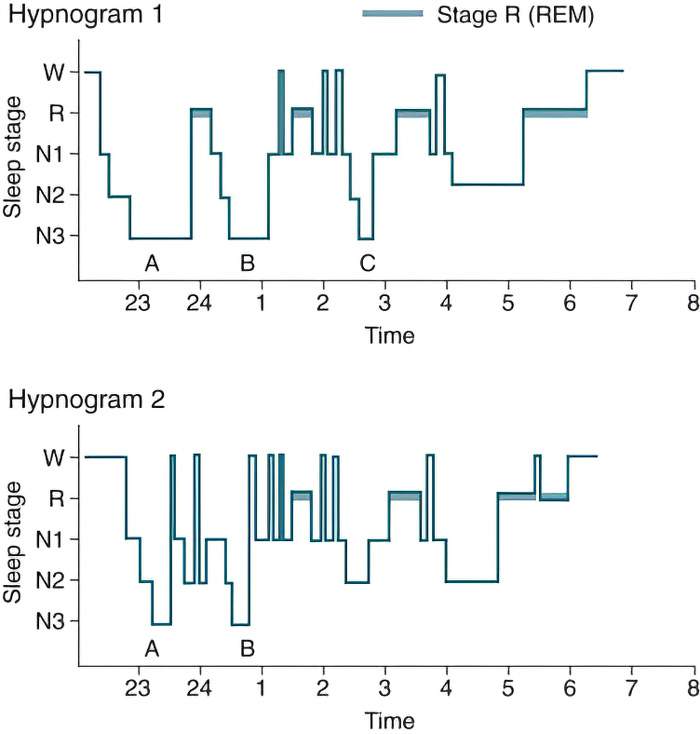A table of contents
- Understanding dreams
- Dream research
- Dream interpretation
- Dream analysis
- Sleep
- Dreams
- Dream memory
- Dream diary
- Latest dream interpretations
Understanding dreams
How to understand what dreams tell us
Since the dawn of time, people all over the world have believed their dreams are subconscious messages and that understanding dreams can give them clues to future and solutions to everyday problems. Sigmund Freud, Carl Gustav Jung, Ann Faraday and many other explorers of dream have analyzed dream images and meanings lurking underneath and have cataloged them as dream symbols. Here, in this lexicon of dream interpretation we will arrange, prepare and group this multitude of different dream meanings for you as a reference for your (very possible) future.
Dreams are not just random, entertaining or scary experiences happening in our sleep. They are complex stories and even feelings which our minds perceive as very real. There is no discussion as to how they feel, but there is as to what they might mean. Dreams are a product of the unconscious, i.e. the colloquial subconscious. Since the unconscious communicates with the consciousness in a dream, the question arises as to the content of these messages veiled in dreams. The dream researchers claim that everything we see and feel in a dream is a clear message from the unconscious, a window to the future. There is a word for that – Oneiromancy. Look it up. Still, dreams are not showing you your life in the future. Dreams show you possibilities – whether you use dreams in your life is entirely up to you.
If you are reading this, you are now curious about the dream interpretation and its symbolism. Use our dream dictionary to prepare yourself in advance for future situations or deliberately provoke or avoid certain circumstances. With over 30.000 dream symbols (which we have yet to add) and various types of interpretation, we are the most extensive English-language dream dictionary on the Internet. To analyze your dreams, simply enter one of the images from your dream into the search field and find out its meaning.
If understanding dreams is new to you, or you still feel unsure about the correct way to understand your dreams, please read the section Understanding Dreams before you start. In this section we will summarize all the information on the procedure for interpreting your dreams, show you special features in the symbolic interpretation of dreams and explain which dreams you cannot interpret due to special circumstances.
Dream research
Historical and modern dream researchers
The interpretation of dreams is not a novelty. The first historical records for the interpretation of dreams can be found in the Old Testament. There are several places in the Bible in which God gives people the ability to interpret dreams. For example, Joseph was able to interpret the pharaoh’s dream in the Old Testament and thereby predict the future. The prophet Daniel, the protagonist of the book of the same name, had numerous visions in his dream and interpreted, for example, Nebuchadnezzar’s dream about the fall of his empire.
The first written evidence of a romantic dream research can be found in early ancient times. Aristotle, Plato and Artemidor von Dalis, were already researching people’s dreams and their potential to predict important personal events of the future. The dream book Oneirokritika by the Greek Artemidor von Dalis also dates from this era , and it is considered the greatest achievement of that time. It also formed the basis for various dream lexicons until the late Medieval times.
Numerous scholars, such as Isidore of Seville, Rabanus Maurus, Hugo of St. Viktor, Thomas Aquinas or Berthold of Regensburg, have adapted, corrected and completed the ancient dream books (also called somniaria or lot books). In 1456, the main work by Johannes Hartlieb “Puoch of all spots art, unbelieving and the zaubrey” was published. It was banned by the church and secular laws of Medieval times as heresy and magic. Nevertheless, the books on dream interpretation, which interpreted the course of illnesses, the weather, political developments and various everyday issues, were very popular among the people of that era.

Even after hundreds of years of research, the interpretation of dreams remains a mystery that has not yet been fully revealed. One of the great, if not the greatest researchers of the field was psychologist, neurologist and founder of psychoanalysis Sigmund Freud. The theories and methods of Sigismund Schlomo Freud (his full name), are still taught, discussed and applied. He was one of the most influential thinkers of the 20th century and is considered the founder of modern dream interpretation. With his work The Dream Interpretation (Die Traumdeutung) he theorizes that dreams are not used to process previous experiences during the day, but rather to access the unconscious. Freud was convinced there are things which are prevented from reaching consciousness on purpose. However, as cognitive inhibition is reduced during sleep, the unconscious, in the form of dreams and the symbolic messages contained therein, reaches consciousness.

Carl Gustav Jung needs no introduction. He also attributed special meanings to different dream symbols. But unlike Freud, who preferred the free association of dreams as the method of interpretation, Jung thought that it made more sense to circle the explicit dream image and interpret it with accompanying dream symbols as well. He was of the opinion that the dream images in connection to other images of the same dream enables a much more precise dream interpretation.
The Australian dream researcher Ann Faraday took a completely different approach to unraveling the secret of dreams. She organized groups in which the members told their dreams in open circles, interpreted them together and reported special experiences in waking. The large number of data obtained in this way formed the core of her research. Faraday is responsible for the fact that the interpretation of dreams has regained popularity in the 1970s, keeping the old practices alive. But even with the contributions of Sigmund Freud, Carl Gustav Jung, Ann Faraday and many other researchers of the past to interpretation of dreams, it still remains a mystery to this day, and science may never be able to fully explain dreams and their purpose.
Dream interpretation
What you need to know to interpret your dream
Our dream lexicon is based on the latest knowledge of oneiromantic, psychological and spiritual dream interpretation and includes the work of all important dream researchers of this area. To find your way around quickly, we will explain here in detail what you need to consider when interpreting your dream.
First, you should know that there are religious and cultural interpretations of some dream symbols in our dream lexicon. The reason for this is quite simple and can be explained with this example: Everyone knows that fire can provide light, warmth and protection, but everyone is also aware of the danger and destructive power it poses. This dream symbol has an almost identical meaning in all interpretations. On the other hand, if you dream of a cow, cultural associations to this dream picture differ. In Europe, America and many other parts of the world, the cow is a simple farm animal. In Hindu India, however, the cow is worshiped as a sacred animal and is, as the Sanskrit name aghnya suggests, absolutely untouchable. Therefore, depending on the type of interpretation, there are differences in the explicit interpretation of some dream images.
In addition, personal associations with dream images play an important role in the interpretation. While most people have a healthy fear of large spiders or venomous snakes, there are also people who are fascinated by these animals and who may even have them as pets. The dream interpretation cannot provide an individually valid interpretation here and you always have to compare whether generalized interpretation is correct for you or whether you have a special relationship to the dream symbol.
These differences in interpretation can also occur with women and men. A good example of this would be a dream of birth. For women, this dream symbolically indicates a new outlook on life, for men, on the other hand, it indicates to a completion of great plans.
In addition to the classic interpretation of symbolic dreams, there is also a psychological interpretation. This is not as much connected with oneiromancy, as it is interpretation of dreams in the sense of empirical science, from the perspective of the soul or one’s own state of mind. This form of dream interpretation is also used by many psychologists as a tool for coping with trauma, because with this type of interpretation we try to deal with our fears in dreams and the psychological dream interpretation can help describe the deep-seated problems with more details.
Finally, an important way of interpretation that you can find in our lexicon of dream interpretation is the spiritual interpretation. This tries to interpret the dreams on a different level in the spirit. However, this special form of dream interpretation leans a lot toward intuitive interpretation and should therefore be used by experienced dream interpreters only.
To help you find your way around our lexicon with ease, we have clearly structured the types of interpretation and marked them as with specific gender-related, cultural or religious differences.
You also need to know that not all of your dreams can be interpreted with the help of dream interpretation. There are many factors, such as certain chemical or herbal substances, external influences to your body or special experiences during waking state that are disruptive to the regular dream course and can create unnatural dream images. The classic sources of consumption of dreams include the following factors:
- Exhaustion before bedtime
- Alcohol consumption
- Strong medication
- Drug consumption
- Unusual physical touch during sleep
- Loud and unusual noises
- Severe thirst or hunger
- Dreams similar to content in films or books
- Being overwhelmed during daytime
For example, if you go to bed exhausted, your body uses the time of sleep to relax and regenerate itself. In this phase it lacks energy to create completely free and informal dream worlds. Even if you dream during this time and can perhaps also remember fragments of individual dream scenes, these dreams are not suitable for the interpretation of the dream due to exhaustion.
The same applies to the consumption of alcohol, drugs or medication. These can create very lively and creative dreams, which you can usually remember quite well. However, they have a direct influence on the brain and can excessively manipulate dream events .
Even direct physical effects on your body, such as touching or making noises can affect the conventional dream course. A classic example of such an effect is when your bedspread slips, causing your body to cool down. This sudden sensation of cold can then be incorporated into your dreams, for example in the form of a snowy landscape or an igloo. The same also applies to acoustic interference. The honking of cars or the sound of sirens, the buzzing of a fly or the sound of a plane flying by can also be built into the dream event in a variety of ways.
However, not everyone is susceptible to this type of dream disorder and if you are not easily awakened by a fly on your face, it is almost impossible for you to reliably recognize these induced dream images and exclude them from your dream interpretation.
The phenomenon of induced dream images can also occur if you experience intense thirst, hunger or a full bladder. The advantage is that most people wake up to such strong needs during sleep and the associated and dream symbols generated this way can be quite accurately identified.
Special experiences while being awake are also among the things that are often incorporated into dreams in a modified form. A visit to an amusement park, seeing a very dear person after a long while or a particularly nice holiday: everything that has created a special impression in waking and later reappears in the dream cannot be analyzed with the help of the dream interpretation This also includes if you dream of a movie that you watched before going to bed or a story from a book that you previously read.
In addition, sleep researchers have divided dreams into different categories, which we will explain in more detail in the Dreams section . Among them are also some special types of dream, which cannot be analyzed with the help of the classic dream interpretation. These dream types are:
- Post-traumatic dreams
- Lucid dreams
- True dreams
- Warning dreams
- Wishful dreams
The reason why post-traumatic dreams cannot be interpreted lies in the bad awakening experiences, and they are experienced over and over again in the dream. In this dream type, the dream images have no symbolic power, but are memories of the waking state and can therefore not be interpreted.
Even in (so called) lucid dreams, the dream interpretation has no usable meaning. The reason for this is that the dreamer is fully aware of the dream and can reshape it as he likes. Accordingly, they are only (and mostly) deliberately created dream images that cannot be interpreted exactly because of this reason.
True dreams are very rare and most people do not have a single true dream in their lives. This dream is characterized by an indescribable feeling. It is usually immediately clear to the dreamer that this dream, with all its details, has just happened somewhere in the real world or will happen in the near future. This dream is a direct prediction and therefore does not need to be interpreted with the help of dream interpretation. There is no scientific explanation for this type of dream.
Warning dreams are very difficult to distinguish from conventional dreams and are very similar to true dreams. Reports of warning dreams have shown that affected people also wake up with a feeling they cannot explain. However, they differ significantly from true dreams.
The so-called dream dreams also belong to the unintelligible dreams. If you want something so much that you have to think about it again and again in everyday life, the probability is very high that you will dream it too. Many accompanying dream images will appear around your wish,serving the dream setting and therefore cannot be interpreted in this way.
The interpretation of third-party dreams is also questionable. Since many dream details and the feelings and sensations and personal associations therein are not fully known, such a dream can be only roughly analyzed, but often too much information is missing for an exact and detailed interpretation.
A completely different problem arises with the interpretation of dreams of children. Children lack the complete associations to many dream images or they have a completely different relationship to the dream symbols. Thus, the symbolic interpretation of dreams cannot provide any help here. Also, It is not possible to determine a general age of children for interpretation of their dreams, since each child matures differently. However, it can be said that the more developed children are, the easier it is to interpret their dreams.
Dream analysis
Recognize complex relationships in the dream world
With help of our lexicon, individual dream images can be interpreted quickly and easily. All you have to do is look up the corresponding dream symbol. However, for a detailed dream analysis it is important to be able to understand certain relationships. In this section we would like to show you an example of how you can interpret your dream as precisely and comprehensively as possible and how you can also recognize complex dream contexts with a high degree of certainty.
Suppose you dreamed of a pool table and you particularly noticed the blue fabric cover of the table. In the individual interpretation, the pool table stands for fraudulent friends. In the dream interpretation, blue as a color indicates prosperity and wish fulfillment. The combination of both meanings with interconnectivity of dream symbols could suggest that through the prosperity achieved, people you took for friends will show their true faces and betray you.
As soon as dream images become dependent on each other, or have a special relationship to each other, the meanings of the individual symbols can be specified more precisely and relationships and connections can be seen and understood.
Another phenomenon that you may have an encounter with are dreams of real people. With the help of symbol interpretation, these can be seen as an independent dream image (e.g. sister, uncle, mother, etc.), but they can also be seen as a personal reference. For example, if you dream your grandfather hands you a carrot, this is usually a clear sign of an inheritance (carrots).
You may also see your brother (or someone very close to you) a lot in your dreams. It can be a dream that does not personally affect you but the person in your dream. This means that all accompanying dream symbols of your dream refer to this person and not to you. Such dreams are relatively rare, but they do happen every now and then.
Furthermore, to have an in-depth dream analysis, it is important that you check each individual interpretation in relation to the general association with this dream symbol and verify that it also applies to you. Deviations in your personal feelings from some dream images can lead to completely different interpretations.
Sleep
Sleep duration and stages of sleep
A polyphasic sleep (the systematic observance of several sleep phases), is not only important for your health, but it’s also crucial for the interpretation of the dream. Too short sleep and/or frequent interruptions mean that you do not go through every sleep phase and cannot experience the dreams associated with it. Although the individual sleep requirements vary slightly from person to person, the National Sleep Foundation recommends an age-appropriate sleep duration of:
| Age | Sleep duration |
| 0 to 3 months | 14 to 17 hours of sleep a day |
| 4 to 11 months | 12 to 15 hours of sleep a day |
| 1 to 2 years | 11 to 14 hours of sleep a day |
| 3 to 5 years | 10 to 13 hours of sleep a day |
| 6 to 13 years | 9 to 11 hours of continuous sleep a day |
| 14 to 17 years | 8 to 10 hours of continuous sleep a day |
| 18 to 64 years | 7 to 9 hours of continuous sleep a day |
| over 64 years | 7 to 8 hours of continuous sleep a day |
As shown in the table, the ideal sleep duration in childhood (up to 17 hours of sleep a day) is quite high and decreases equally with increasing age. Daytime sleep is also an integral part of everyday life in some regions of the world, colloquially known simply as afternoon nap or power napping (siesta). The short sleep duration of a maximum of 20 minutes gives the body new strength and increases the abilities of focus, performance and reaction. However, in most cases the short sleep phase is not enough to create a dream.
The American Academy of Sleep Medicine divides sleep into five stages. In 2007, this division replaced the older nomenclature from 1968 by Allan Rechtschaffen and Anthony Kales, which consisted of six sleep stages. A conventional nightly sleep cycle looks like this:
| W | Lying awake |
| R | REM sleep |
| N1 | Light sleep, level 1 |
| N2 | Light sleep, level 2 |
| N3 | Deep sleep |
The lying awake phase (W) is the phase just before falling asleep. Sleep researchers divide this phase into two subcategories: the attention phase, in which we still consciously perceive our surroundings, and the relaxed phase, which is characterized by eyes that are already closed.
R – REM sleep
REM (rapid eye movement) sleep (R) is also called dream sleep and differs from all other sleep phases in many respects. In this sleep phase, dreams are much more lively, visual and emotional. In addition, the body shows a variety of reactions during REM phase, such as the rolling of the eyeballs (hence the name REM; rapid eye movement), increased blood pressure, adrenaline release and increased gastric activity. At the beginning of sleep, the duration of this sleep phase is on average five to ten minutes, but is continuously extended in the later phases. REM sleep usually takes place every 90 minutes. Adults spend an average of 104 minutes a night in REM sleep, while in newborns it is almost continuous.
N1 – Light sleep, level 1
The light sleep of the first stage (N1) is achieved shortly after falling asleep. Typical for N1 sleep are muscle relaxations and the slow disappearance of consciously perceived environments.
N2 – Light sleep, level 2
The light sleep phase (N2) takes up almost 50 percent of total sleep. An element of this sleep phase is the so-called sleep spindles, i.e. the inhibition of perception stimuli.
N3 – deep sleep
This phase is the deepest possible sleep phase and also takes up a large part of the total sleep. It is possible to speak during sleep and sleepwalk only in the deep sleep phase (N3).
A hypnogram of an example 90-minute adult sleep. The transitions from one sleep phase to the next phase can be seen in chronological order. The onset of the respective sleep phases as well as the duration and the sequence are different for all people, but the phase rollout is almost always identical .

Dreams
Dreams in different sleep phases
A general problem with dreams is that they cannot be observed immediately. Nevertheless, dream researchers have found three ways to explore dreams indirectly. They did this by:
- Brain waves Measurement (EEG – electric encephalography)
- Observation of people asleep and their physical actions during sleep
- Testimonials from test subjects through targeted waking
Results of various studies and numerous experiments, dream researchers were able to determine several dream types as:
REM dream
A particularly lively and emotional dream that only occurs in REM sleep.
NREM dream
A simple dream of different lengths that occurs in sleep phases N1 and N2.
Fall asleep
A short dream that only occurs in the sleep phase.
Nightmare
A REM dream with fear and panic-inducing content that leads to waking up.
Pavor nocturnus
A dream that leads to startle from deep sleep in children. The so-called night terrors differ from the nightmare because it is very difficult to remember the dream content. The dream also only occurs in five percent of all children up to the age of seven.
Post-traumatic dream
Reliving traumatic experiences again. This dream is not tied to a specific sleep phase.
Lucid dream
The lucid dream, also called “a vision”, can also occur in every sleep phase.
Dream memory
How to remember your dreams better
Most people are not even aware that they dream an hour and 30 minutes on average each night. This time is normally divided into four to six more complex dream stories as well as several short dreams and/or individual dream sequences. However, since the time in dreams passes much faster than when you are awake, some dreams can be experienced as hours – even though in reality the dream is only a few minutes short.
Many people claim they never, or only rarely, dream. But this is not true. Everyone dreams several times every night. The only exception is people who have to take medication that actively suppress dreaming.
The reason why so many people believe that they are not dreaming is because they forget their dreams. Very few people are able to remember almost all elements of their dreams. However, this is not “a talent”, but a matter of practice. Our dream lexicon will give you some tips to help you to remember your dreams as quickly as you’ve never imagined. The only thing you need is discipline, and some pen and paper.
If you really can’t remember anything from your dreams, this can be explained as well. The two most common reasons for this are too little sleep or too much stress.
Make sure you have enough sleep (at least seven hours a night). Take your time and go to bed sooner. Do not drink alcohol before bed and do not eat too late or too much. If you are currently under a lot of stress, try to calm and relax with the help of breathing exercises before going to bed. Before you fall asleep, tell yourself that you will surely remember your dream today. Don’t just say it, convince yourself! It is helpful For some people to think intensely about a great wish before falling asleep. This dream can not be interpreted as a sign of what lies ahead, but it will help you to remember your dreams again.
Don’t lose hope if things don’t work out straight away. Just like everyone else, you will be able to remember your dreams. Do not give up.
The next step requires a lot of self-discipline. Keep a dream diary of all your dream memories. In the next chapter we will explain in detail what a well-structured dream diary looks like and what you should write down in addition to the dream stories.
As soon as you wake up and remember even one dream symbol, even if it’s in the middle of the night, write it in your dream diary! Dreams are remembered quite firmly shortly after waking up – but the impression is deceptive. Most people forget most of their dreams within a minute or two after waking up. By writing it down, you willfully deal with your dreams and train your dream memory. You can remember your dreams so extensively after only two to three weeks, you might need another notebook for your dream diary.
Dream diary
Structure and content
As already mentioned, dreams are very fleeting and quickly forgotten. A dream diary keeps your dreams safe and helps you to remember your dreams better. The most common use of dream diaries are:
- Personal curiosity
- Increase in the frequency of lucid dreams
- Therapy support
- Interpretation of dreams
- Improving dream memories
However, there is no standard as to what a dream diary or dream protocol should look like or how it should be structured. It should meet your personal needs and please you. A simple notebook is enough for most people to write down their dreams either as a whole story or in the form of bullet points. Some also use computers to write down their dreams and others use a voice recording software instead.
It is also very practical to combine a simple notepad and a chic notebook in which the dreams are transferred neatly at a later time. Some people who keep such a double dream diary also decorate their dream story with pictures, sketches and symbols. It may sound a bit playful at first, but not only does it offer the advantage of a nice written reminder, it also provides for a very intensive examination of your own dreams. Drawing also increases the awareness and memory of your dreams in a visual way.
But no matter what type of dream diary you prefer, it is important that you always have it at hand on the bed stand. Especially with a dream memory that is not yet very articulated, often there is a very small window of time after awakening until the dreams fade into oblivion again.
You probably wonder whether you have to write anything else besides your dream story. You should only write down what you personally find useful. Here are some examples for possible additional dream information:
Dream time
Write down the date of your dream and, if necessary, the time. This way you can keep an overview of your dreams for longer periods of time.
Dream name
Give your dream a name, similar to a story or a fairy tale. So each of your dreams has its own heading.
Feelings of dreams
Also write down what feelings you felt in the dream and immediately after waking up.
Gaps in the dream
Certain dream symbols or dream scenes that you can no longer remember should be marked in your dream diary by a certain sign or symbol.
Reason of awakening
If there was a specific reason in the dream that led to awakening, write it down.
External dream influences
Further possible notes could be made about the external influences, such as temperature, moon phase, sounds etc.
Day events
Some people write down keywords about how they organized their day, what they ate, or their level of fatigue.
Latest dream interpretations
- Dreaming about feces (poop) – interpretation and meaning

- Dreams about mountains – interpretation and meaning

- Dreams about a photograph – interpretation and meaning

- Dream about lipstick – meaning and symbolism

- To dream of women -symbolism and meaning

- Dreams about the Ladder – interpretation and meaning

- Dreaming about honey – Interpretation and meaning

- Dreaming about your colleague – symbolism and meaning

- Dreaming about your boss – symbolism and meaning

- Dreaming about Animals – meaning and interpretation

- Dream about a Pigeon – meaning and interpretation

- Dreams about your partner – meaning

- Dreams about a sunflower – interpretation

- Dreams about a Skeleton – symbolism

- Dream about giraffes – meaning and interpretations

- Dreaming about a Lawyer – Interpretation

- Dreams about a Lover/Mistresses – dream dictionary

- Dreams about Cucumbers – symbolism

- Dream about an aquarium – symbolism and interpretation

- Dreaming about Worms – interpretation and meaning

- Dreams about a Spider – interpretation and symbolism

- Dreaming about tea – interpretation and meaning

- Dreaming about milk- interpretation and meaning

- Dreams about a Lake – interpretation and meaning

- Dreams about a knife – interpretation and meaning

- Dreams of elderly, old people – symbolism and meaning

- Dreams about a Donkey – interpretation and meaning

- Dreaming about Apricots – interpretation and symbolism

- Dreaming about a celebrity – Interpretation and meaning

- Dreaming about being arrested – meaning and symbolism

- Dreams about a Castle

- Dreams about the Deceased – interpretations and meaning
- Crocodile – dream meaning and interpretation

- Dreams about Alligators – meaning and explanation

- Dream about getting lost – what does it mean?

- Dream about UFOs – meaning and interpretation

- Dreaming about aliens – dream interpretation

- Dream about an aquarium – meaning and explanation

- To dream of a Carrot – meaning and interpretation

- Dreaming about a chest (furniture)

- To dream about a closet or a cabinet, locker

- Dreaming about a specific room

- Dream of visiting a zoo – full interpretation

- Snakes – Dream meaning and interpretation

- Python in dreams – meaning and explanation

- Dreaming about a cabin – dream explanation

- The meaning of dreams about Garlic

- What does it mean to dream about glass?

- Basketball – dream meaning and interpretation

- Dreaming about birds – dream explanation

- Interpretation of dreams about a library

- Dream of a book – meaning and explanation

- Interpretation of dreams about ballet or a ballerina

- Dreaming of onions – meaning and interpretation

- What does a dream of a truck symbolize?

- Dreaming about a suitcase – meaning and interpretation

- The meaning of dreams about fish

- Interpretation of dreams about newspapers

- Dreams about rocks – meaning and interpretation

- What does it mean to dream about rain?

- Juice – dream meaning and interpretation

- Dreaming about food – meaning and interpretation

- Meaning of dreams about a ball

- Interpretation of dream about a waterfall

- Clouds – Dream meaning and interpretation

- To dream of a parachute

- Dreaming about a box – meaning and interpretation

- Dreaming of people with disabilities

- Meaning of the dreams about seagulls

- Dream about a rocket – Meaning and interpretation

- To dream of hypnosis, hypnotherapy, hypnotic suggestion

- Dreams about a mouse

- Interpretation of dreams about Trees

- What is the meaning of Salt in our dreams?

- Camel – dream meaning and interpretation

- Interpretation of dreams about falling

- Pepper – dream meaning and interpretation

- Dreaming of an apple

- Bricks – dream meaning and interpretation

- Dreaming about a river – Dream interpretation

- To dream of an epidemic

- To dream about Grass – Meaning and Interpretation

- Dreaming about a house – meaning and interpretation

- Interpretation of a dream about God

- Dreaming about bananas

- To dream of a car accident

- Interpretation of dreams about a President

- Dream about a Politician – Meaning and Interpretation

- Dreaming about Santa Claus – Dream meaning

- Seeing a Pig in your dreams – dream meaning

- Interpretation of dreams about Outer Space

- Dreaming about an attic – meaning and interpretation

- What does it mean to dream about smoke?

- To dream about a ghost – meaning and interpretation

- Dreaming about a brother – dream meaning

- The meaning of colorful wildflowers in your dream

- Dreaming about an explosion – dream meaning

- The Interpretation of a dream about a Bicycle

- To dream about being sick – dream meaning

- Meaning of dreams about hair
